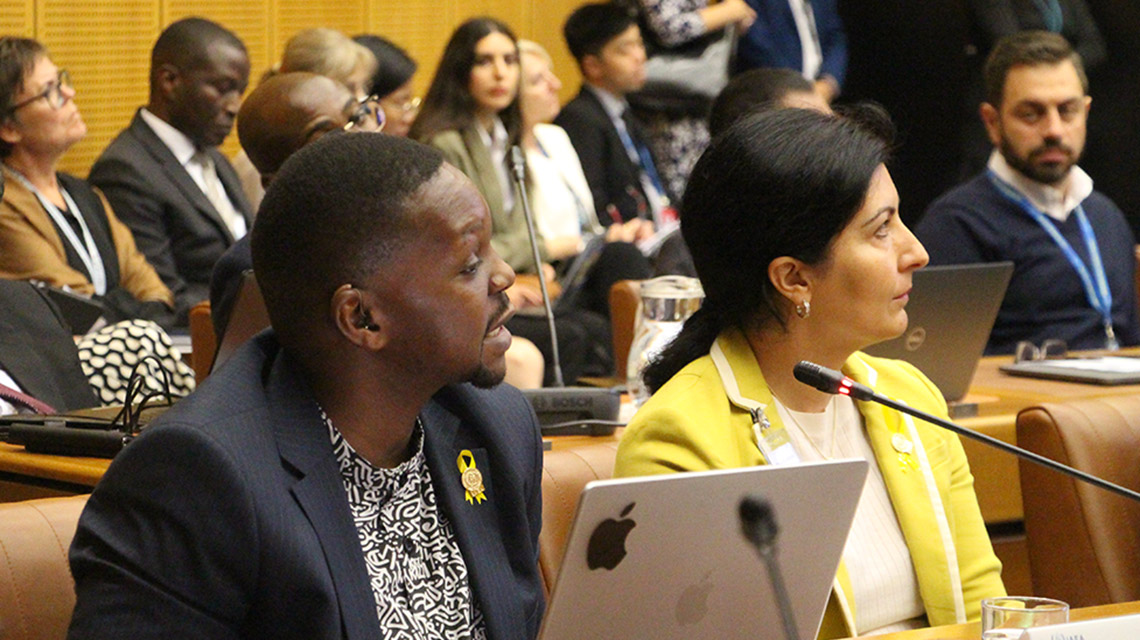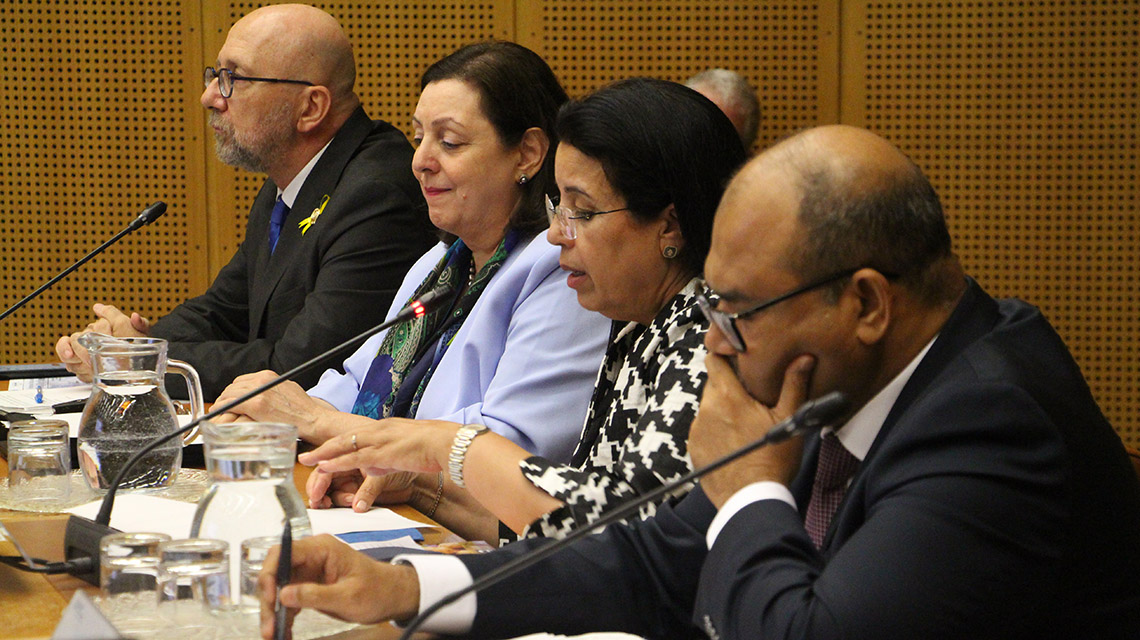In high-income countries nearly all patients have access to radiotherapy. In middle-income countries fewer than 60 percent do. In low-income countries, only one in ten people has access to this life-saving treatment. The IAEA’s flagship cancer initiative Rays of Hope: Cancer Care for All sets out to improve that by supporting the establishment and expansion of radiotherapy services around the world.
The side event spotlighted the role of radiation medicine techniques and nutrition in managing childhood cancers. Focusing on medulloblastoma – the most common malignant brain tumour in children – as a case study, IAEA experts described the care that patients receive. They underscored that recent advances in imaging, treatment, quality assurance and nutritional support have not only improved survival but also reduced the side effects that children experience.
Child by child, the IAEA and its collaborators have been making strides toward equitable cancer care for all. Representatives of three of those collaborators – the WHO Global Initiative for Childhood Cancer, the Paediatric Radiation Oncology Society and the EuroSafe Imaging Working Group on paediatric imaging – underlined the importance of ensuring that care is both continuous and of a high quality.
Yet, despite global progress, there are a number of challenges that still need to be addressed to close the gap between countries in terms of funding, equipment, infrastructure, education, training and human resources, to name but a few.
As immense and as daunting as these challenges may seem, there is a clear way forward and concrete steps that can be taken.
“With continued collaboration, scientific expertise, global will and commitment, we can tackle these challenges and meet the needs of children with cancer around the world," May Abdel-Wahab, Director of the IAEA’s Division of Human Health, underscored in her closing remarks. “We cannot fail to deliver," she said, “and we must never forget that access to care is a moral imperative and human right.”


